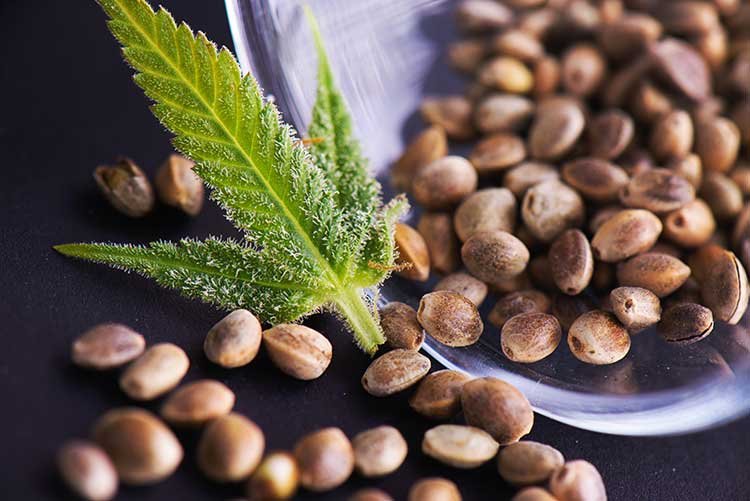What Can I Expect from an Autoflower Outdoor Yield?
Growing outdoors can be an enjoyable and rewarding experience, especially when you choose to grow autoflowers. Autoflowering varieties offer a few key benefits that make them the perfect choice for any gardener, stoner or farmer who wants to save time and effort by growing marijuana plants that are low maintenance and high yielding. One of the most important questions any autoflower grower will have is – what kind of yield can I expect from my homegrown crop?
Read on to discover how much bud you can produce with your outdoor autoflowers!
The Basics of Autoflower Genetics for a High Yield Outdoors
Autoflower genetics are key to achieving a robust and successful outdoor harvest. Understanding the fundamentals of how these plants grow and develop is essential for any grower looking to maximize their yield.
Autoflowering cannabis plants are unique in that they do not require a change in light cycle to begin flowering, allowing them to start much earlier in the season compared to photoperiod strains. Knowing the genetic makeup and traits of your chosen autoflower strain can help you make informed decisions when it comes to selecting the ideal grow site, planting time, and nutrient regimen. By mastering the basics of autoflower genetics, you can ensure that your outdoor grow is both productive and rewarding.
Proper Soil Preparation for the Highest Autoflower Outdoor Yields
Outdoor growing of autoflowering plants can be a rewarding experience, but proper preparation of the soil is key to achieving the highest yields. Before planting, it is important to loosen the soil to a depth of at least 12 inches to allow the roots to easily penetrate and expand.
Adding organic matter such as compost or well-rotted manure will improve the soil's nutrient content and overall structure. Additionally, incorporating perlite or vermiculite can enhance drainage and aeration, promoting healthy root growth. After planting, a layer of mulch can help retain moisture and suppress weed growth.
Remember, taking the time to properly prepare your soil can pay off in the form of vigorous and abundant autoflowering plants.
Read: Best Autoflower Bloom Nutrients
Read: Best Hydroponic Nutrients for Marijuanas
What is the best soil for autoflowers?
When it comes to growing cannabis plants, having the right soil can make all the difference. While there are many types of soil out there, not all are created equal when it comes to nurturing your plants.
The best soils for cannabis plants are those that are rich in nutrients and allow for proper drainage. Organic soils that include things like composted manure, worm castings, and peat moss are ideal because they provide a steady release of nutrients over time.
Additionally, soils that are slightly acidic with a pH between 6 and 6.5 are best. With the right soil, your cannabis plants will be able to grow strong and healthy, producing bountiful buds with high levels of THC.
How to make your own compost
Composting is not only a great way to reduce waste, but it also helps to create nutrient-rich soil that can be used to grow healthy plants. Making your own compost doesn't have to be complicated, it can be done in three simple steps.
Step 1
Gather brown and green materials like leaves, twigs, sticks, branches, grass clippings, and food scraps.
Step 2
Layer the materials in a bin or pile, making sure to add water to keep it moist.
Step 3
Turn the pile over occasionally to aerate it and help the breakdown process.
With a little patience and dedication, you can have your own compost ready to use in just a few months. Plus, you'll have the satisfaction of knowing that you're doing your part to reduce waste and create a healthier world.
Autoflower Yield Indoors
When it comes to growing autoflowering marijuana seeds indoors, the question of yield is always at the forefront of a grower's mind. While yields can vary depending on factors like genetics and grow conditions, autoflowering plants tend to have a shorter lifespan than their photoperiod counterparts, which means they will produce buds more quickly. Generally speaking, indoor growers can expect to yield an average of 100-200 grams per square meter from their autoflowering cannabis plants.
However, with the right growing techniques and equipment, it is possible to achieve even higher yields. Ultimately, the success of your autoflowering cannabis grow will depend on your ability to create an environment that promotes growth and maximizes yield.
Techniques to Maximize Sunlight and Control Temperature for Maximum Yield
As marijuana cultivation becomes more common, many growers are seeking ways to maximize their yield. One key factor in successful cultivation is the amount of sunlight the plants receive and the temperature they are grown in.
Luckily, there are several techniques that can help growers maintain ideal conditions. For example, using reflective materials to bounce light back onto the plants can increase the amount of sunlight they receive.
Additionally, growers can use shades or curtains to regulate the temperature in the growing area, ensuring that it stays within the optimal range for autoflowering cannabis plants growth. With these techniques and others, growers can get the most out of their autoflowering plants yield.
How to Prune, Train, and Manage Autoflowering Plants Yield
Autoflowering cannabis plants can be a delight to grow, but knowing how to properly prune and train them is crucial for maximizing yield and achieving the desired shape. By growing outdoors you're already at a huge advantage over indoor growers because you have the best grow equipment at your disposal which is, drum roll please..... The Sun!
Maximizing your plants exposure to the sun is the best thing you can do to get massive yields. Below are some training techniques you can use to help your plants soak up the most sun.
Topping
One effective training method is topping, which involves removing the top of the plant to stimulate lateral growth and increase the number of colas. Like many things, some growers are against topping autoflowers because they say that the plant does not have enough time to recover and stresses the plant too much.
Low Stress Training
Low stress training using wire to bend the branches down
Another approach is low-stress training (LST), which involves gently bending the branches and tying them down to encourage horizontal growth and create an even canopy.
Defoliation
Finally, defoliation can help improve light penetration and air circulation by selectively removing leaves and branches. By utilizing these three techniques, growers can ensure that their autoflowering cannabis plants are healthy, robust, and primed for a bountiful harvest.
Strategies for Dealing with Pests and Diseases That Could Reduce Yields
As cannabis cultivation continues to gain popularity, growers are increasingly faced with the challenge of dealing with pests and diseases that could significantly reduce their yields. Fortunately, there are several strategies that growers can employ to protect their crops and keep them thriving.
One effective approach is to use natural predators such as ladybugs or beneficial nematodes to combat pests like spider mites and thrips. Keeping a close eye on the plants and regularly inspecting them for signs of diseases such as powdery mildew or bud rot is also crucial. Planting companion plants like clover or marigold can also help deter pests and boost soil health. Employing these strategies is crucial for ensuring that cannabis yields remain high and of excellent quality.
Troubleshooting Your Autoflower Outdoor Grow to Increase Production
Growing autoflowering plants outdoors can be a fun and fulfilling experience, but sometimes the plants don't produce as much as we'd like. This could be due to a number of factors, but fear not! There are troubleshooting steps you can take to help increase production.
One important step is to check the pH levels of the soil and adjust as necessary. Your pH should be around 6.5. If it's too high or low your plant will not have access to key nutrients and can suffer from "Nutrient lockout."
What is Nutrient Lockout?
Leaves show if there are nutrient excess or deficiencies
If you're a farmer or a plant enthusiast, you may have heard of the term "nutrient lockout." This might sound like something straight out of a sci-fi movie, but it's actually a phenomenon that can happen to plants with a serious impact on their health.
Nutrient lockout is a condition that occurs when a plant is unable to absorb essential nutrients from the soil. This can happen for a variety of reasons, including soil pH imbalances, overuse of fertilizers, and excessive salt buildup.
When a plant experiences nutrient lockout, it can lead to stunted growth, yellowing leaves, and even death. It's essential for growers to be aware of this condition and take steps to prevent it, like performing regular soil tests and using appropriate fertilizers.
Where Can I Buy Autoflowering Cannabis Seeds?
You can find autoflowering cannabis seeds in various online stores. It is important to buy your seeds from a reputable seller, as some sellers offer low-quality or counterfeit products. When looking for the perfect autoflowering plants, always take into account the strain’s THC and CBD levels as well as any reviews about the seed before making a purchase.
We highly recommend getting autoflowering plants seeds from ILGM.com. They offer a wide selection of marijuana seeds and are committed to providing only the highest-quality products. With years of experience in breeding autoflowering and photoperiod seeds, ILGM is a trusted source for finding your Blue Dream Autoflower seeds.
ILGM Benefits
Best genetics
Feminized Seeds - so you know you'll only get female plants
Autoflowering seeds and photoperiod seed selection
Free shipping
USA based
What are some Highest Yielding Autoflowering Strains?
Read our Best Autoflower Strains article for more information.
The list is in no particular order.
Northern Lights
Amnesia Haze
Blue Dream
Big Bud
Gorilla Glue
Pineapple Express
FAQ
Q: What are autoflowering plants?
A: Autoflowering plants are a type of marijuana plant that will flower without the need for change in light cycle like photoperiod plants. Autoflowers typically take around 10-12 weeks to finish and can be grown in shorter seasons or indoors.
Q. How do I grow autoflowering cannabis plants?
A: Growing autoflower plants is relatively easy but there are some key steps you must follow for success. These include choosing the right strain, providing adequate sunlight or artificial light, giving your plant enough water and fertilizer, and regularly monitoring your plant’s health.
Q: Are autoflowering seeds feminized?
A: Yes, most autoflowering cannabis seeds are feminized. This means that the seed will only produce female plants. It is important to buy your autoflowering seeds from a reputable seller in order to ensure you are getting quality genetics and high yields.
Q: What is the average autoflower yield?
A: Autoflower plants yield can vary greatly depending on how well the plants are cared for. More experienced growers will have healthy, more robust plants that produce yields that are far superior to beginning growers.
In general, autoflowering plants yield:
Growing Indoors: 1.5-4 ounces per plant
Outdoor growers: 6-12 ounces per plant
Q: How do I maximize plant growth?
A: You can maximize plant growth by giving your plant the following:
Proper nutrients
Good ventilation
Balanced humidity
Temperature of 60-80 degrees Celsius
Balanced pH: Hydro-5.8 Soil-6.5




















Are you wondering if marijuana is classified as a stimulant? Read our article to find out.